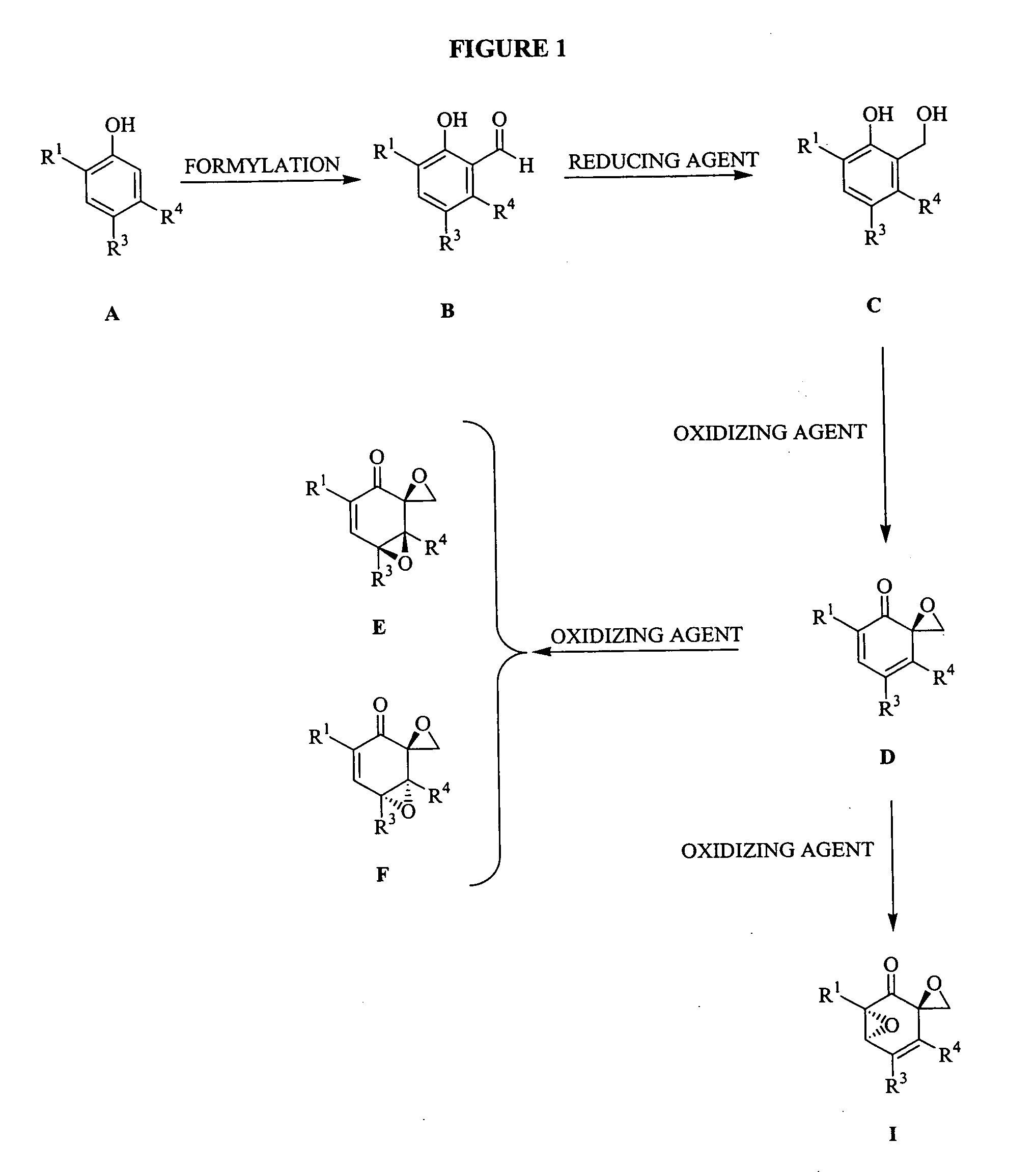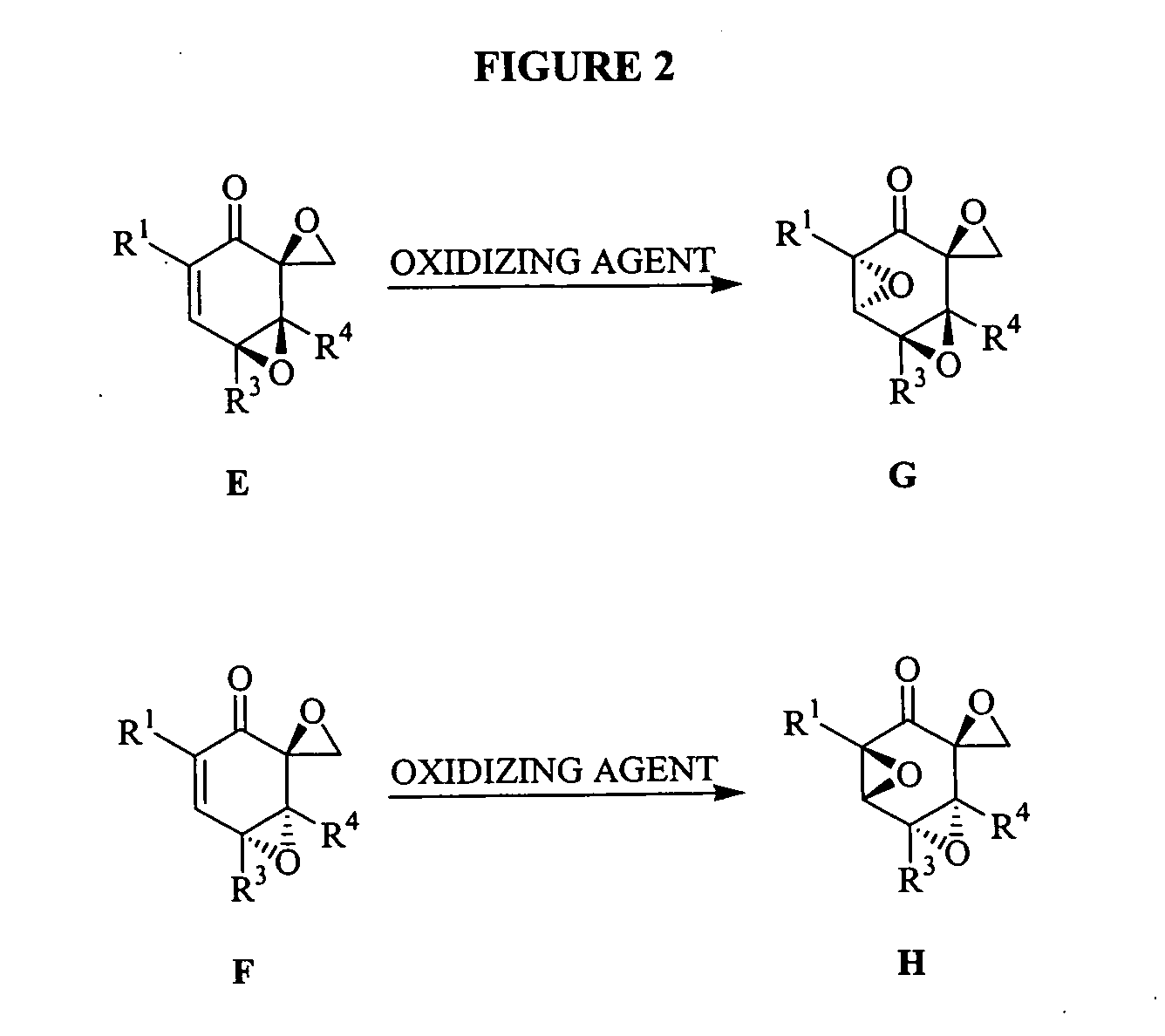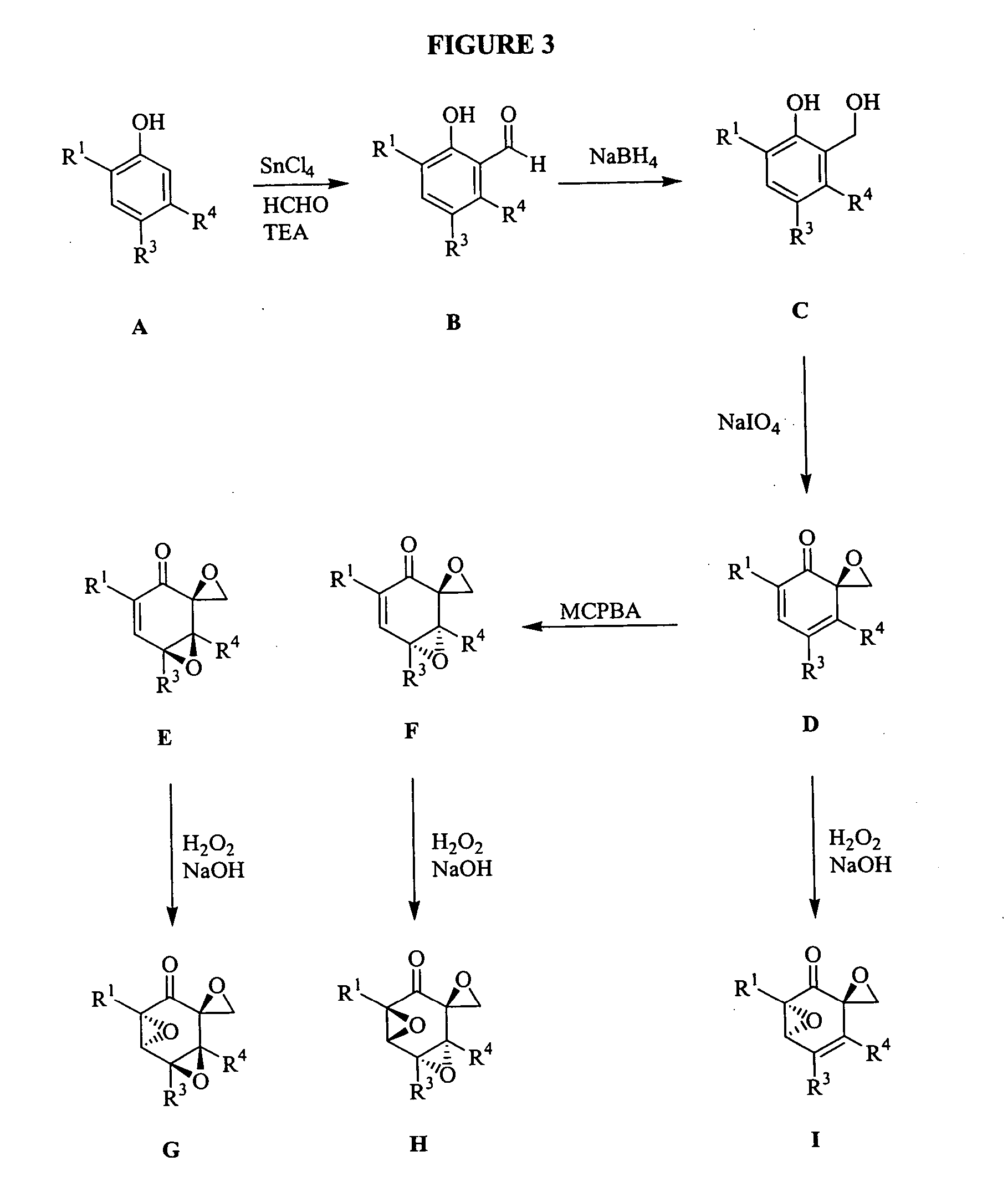Triptolide analogs for the treatment of autoimmune and inflammatory disorders
a technology of autoimmune and inflammatory disorders and triptolide, which is applied in the field of pharmaceutical chemistry, can solve the problems of under-appreciation of potential, complex process, and inability to produce serious illness in tissu
- Summary
- Abstract
- Description
- Claims
- Application Information
AI Technical Summary
Benefits of technology
Problems solved by technology
Method used
Image
Examples
example 1
Synthesis of Substituted Benzyl Alcohols.
[3086] To a magnetically stirred solution of the phenol (20 mmol) in toluene (10 mL), triethylamine (8 mmol) was added followed by SnCl4 (2 mmol). After stirring for 0.5 h at room temperature, paraformaldehyde (40 mmol) was added and the slurry heated to 95° C. for 16 h. The reaction mixture was cooled and poured into water (40 mL) and acidified to pH 2 with 1 N HCl. The aqueous layer was extracted with diethyl ether (3×60 mL). The combined organics were washed with brine, dried (sodium sulphate) and concentrated under vacuo. The crude product (B) was subjected to reduction with NaBH4 (1.5 equivalents) in MeOH at 0° C. After stirring the reaction for 1 h, the reaction mixture was quenched with a saturated solution of ammonium chloride and acidified to pH 4 with 1 N HCl. MeOH was removed under vacuum and the aqueous layer extracted with ethyl acetate (2×50 mL). The combined organics were washed with brine, dried (sodium sulfate) and concentr...
example 2
Formation of Monoepoxide Using Sodium Periodate:
[3095] To a magnetically stirred solution of C (2 mmol) in MeOH (12 mL), a solution of NaIO4 (2.2 mmol) in 3 mL water was added dropwise at 0° C. After one minute of stirring a precipitate began to appear. After stirring for another 20 minutes the precipitate was filtered and washed with CHCl3. Water was added and the aqueous layer was extracted with chloroform. The combined organics were washed with brine, dried (sodium sulfate) and concentrated under vacuo. Purification by flash chromatography using 1:7::ethyl acetate:hexanes yielded the desired product (D, 80%).
[3096]1H NMR (CDCl3): 6.87 (d, 1H, J=6.6 Hz), 6.3 (m, 1H), 3.22 (d, 1H, J=8.1 Hz), 3.15 (d, 1H, J=8.1 Hz), 2.9 (m, 1H), 1.79 (d, 3H, J=1.5 Hz), 1.08 (d, 3H, J=2.1 Hz), 1.05 (d, 3H, J=2.1 Hz).
[3097]13C NMR (CDCl3): 195.31, 144.45, 141.75, 135.62, 124.02, 59.27, 58.81, 26.45, 22.14, 21.88, 16.42.
[3098]1H NMR (CDCl3): 6.8 (m, 1H), 6.23 (m, 1H), 3.14 (m, 1H), 3.05 (m, 1H),...
example 3
Formation of Diepoxides from the Monoepoxides Using mCPBA:
[3104] To a magnetically stirred solution of D (1 mmol) in methylene chloride (10 mL), mCPBA was added and the reaction mixture stirred for 14 h. The mixture was diluted with methylene chloride and washed twice with saturated sodium carbonate. The combined organics were washed with brine, dried (sodium sulfate) and concentrated under vacuo. Purification by flash chromatography using 1:7::ethyl acetate:hexanes yielded 2 products that were separated. Stereochemical assignments were made by comparison with literature data. Typically the higher RF spot was assigned the stereochemistry F and the lower RF spot was assigned the stereochemistry E. The combined yield for the reaction was typically 70%.
[3105]1H NMR (CDCl3): 6.95 (d, 1H, J=4.5 Hz), 3.46 (d, 1H, J=4.5 Hz), 3.42 (d, 1H, J=6.6 Hz), 3.1 (d, 1H, J=6.6 Hz), 2.85 (m, 1H), 1.31 (s, 3H), 1.04 (d, 3H, J=5.1 Hz), 1.02 (d, 3H, J=5.1 Hz).
[3106]13C NMR (CDCl3): 190.71, 149.44, 1...
PUM
| Property | Measurement | Unit |
|---|---|---|
| valences | aaaaa | aaaaa |
Abstract
Description
Claims
Application Information
 Login to View More
Login to View More - R&D
- Intellectual Property
- Life Sciences
- Materials
- Tech Scout
- Unparalleled Data Quality
- Higher Quality Content
- 60% Fewer Hallucinations
Browse by: Latest US Patents, China's latest patents, Technical Efficacy Thesaurus, Application Domain, Technology Topic, Popular Technical Reports.
© 2025 PatSnap. All rights reserved.Legal|Privacy policy|Modern Slavery Act Transparency Statement|Sitemap|About US| Contact US: help@patsnap.com



